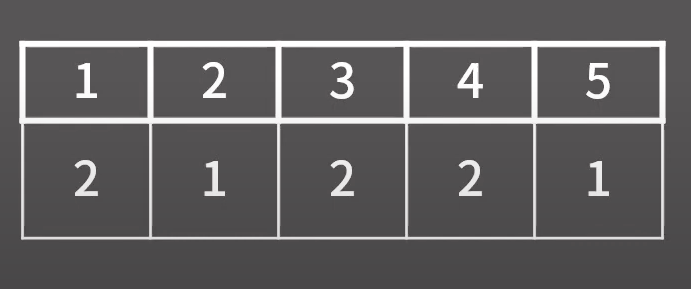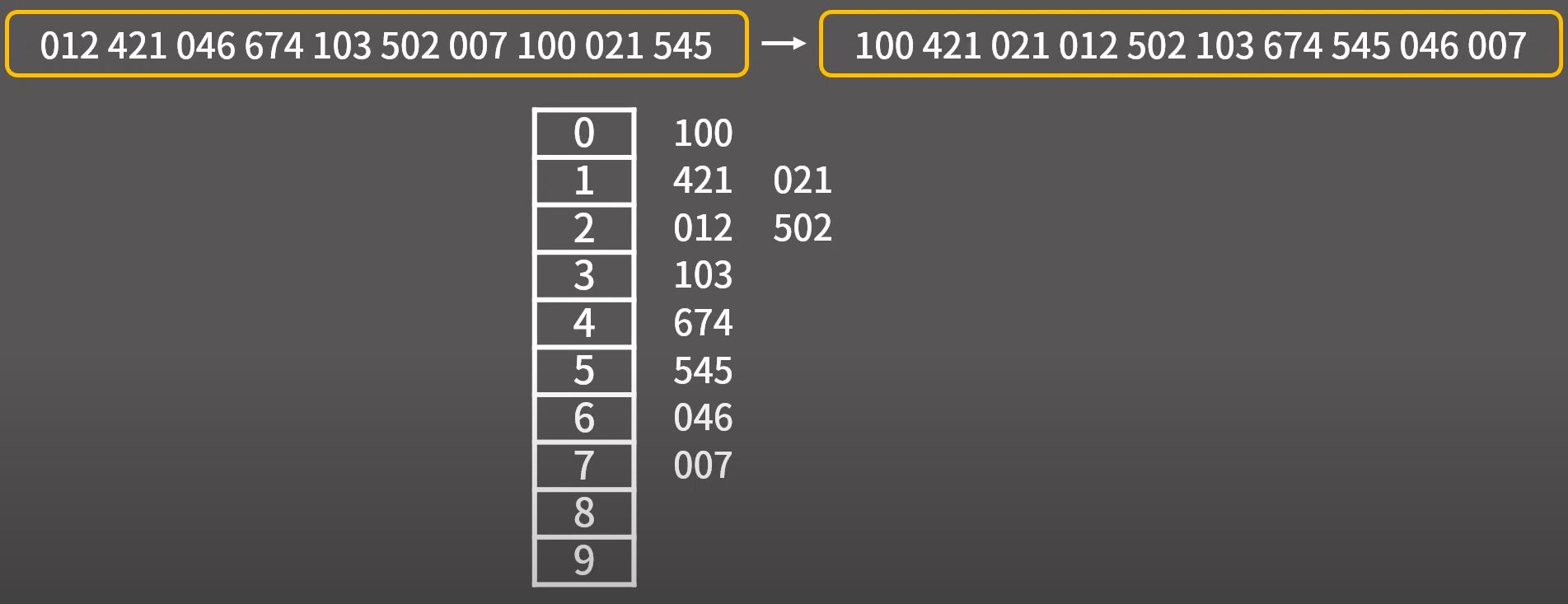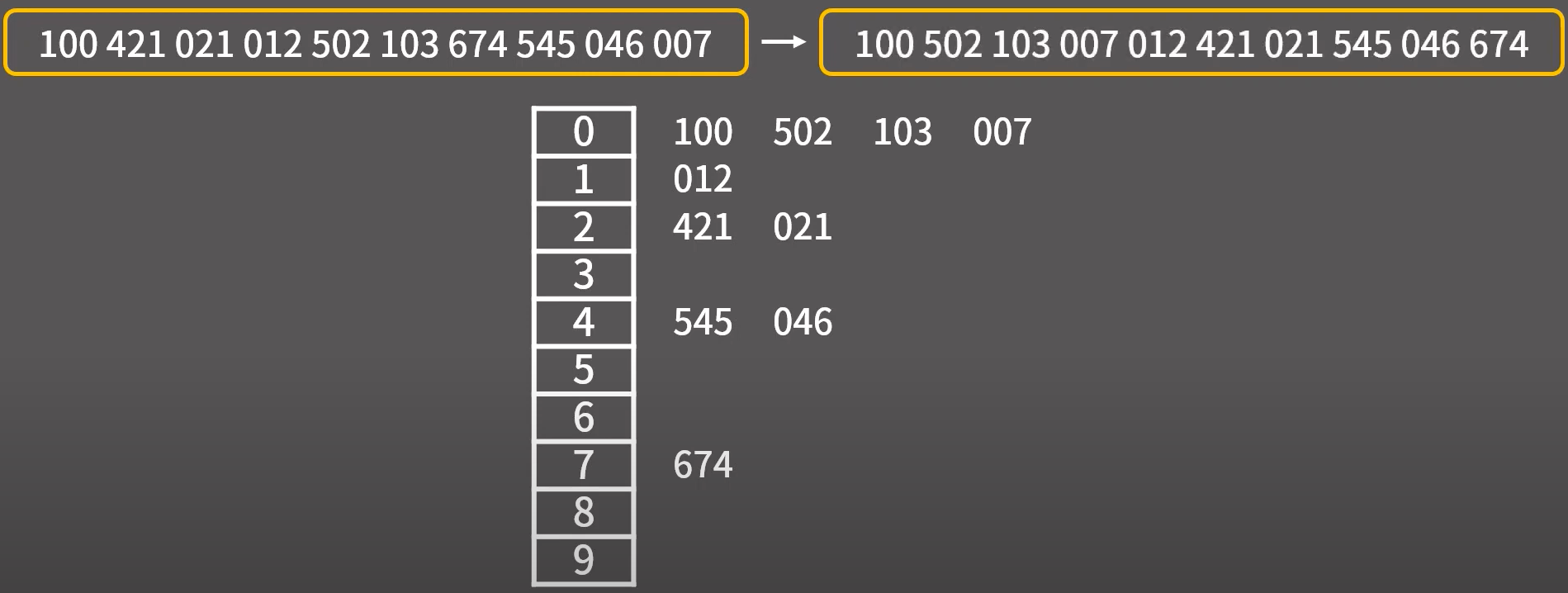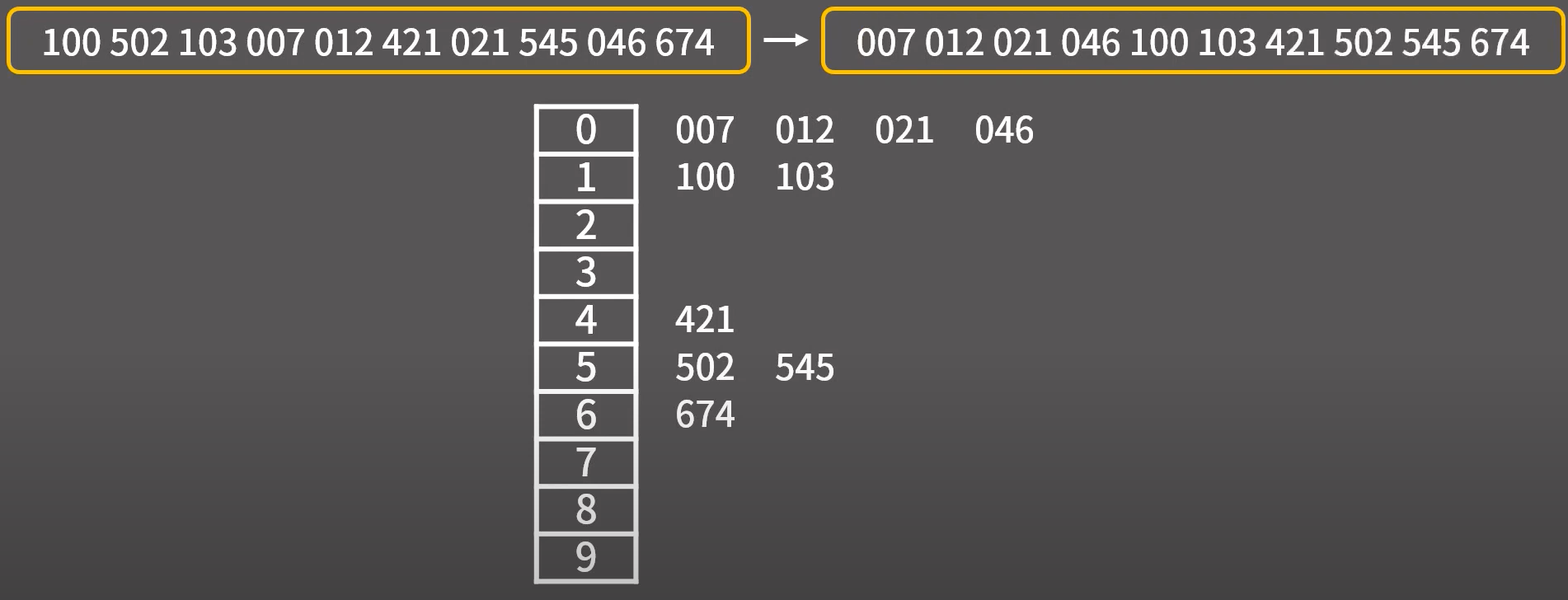(알고리즘) 바킹독의 실전 알고리즘 0x0F강 ( 정렬 II )
바킹독의 실전 알고리즘 0x0F강 ( 정렬 II )
목차
- 0x00 Counting Sort
- 0x01 Radix Sort
- 0x02 STL sort
- 0x03 정렬의 응용
1. Counting Sort

- 위그림의 수열을 오름차순으로 정렬하고 싶다면 어떻게 할 것인가?

- 1은 2번, 2는 2번, 3은 2번, 4는 2번, 5는 1번 나왔다는 것을 의미
1) BOJ 15688번 : 수 정렬하기 5
1-1) C
#include <bits/stdc++.h>
using namespace std;
int freq[2000001];
int main(){
ios_base::sync_with_stdio(0);
cin.tie(0);
int n;
cin >> n;
for(int i =0; i< n ; i++){
int a;
cin >> a;
freq[a+ 1000000]++;
}
for(int i = 0; i<= 2000000; i++){
while(freq[i]--){
cout << i - 1000000 << '\n';
}
}
}
1-2) Java
import java.io.BufferedReader;
import java.io.IOException;
import java.io.InputStreamReader;
import java.util.Arrays;
public class Back_15688 {
public static void main(String[] args) throws IOException {
BufferedReader br = new BufferedReader(new InputStreamReader(System.in));
StringBuilder sb = new StringBuilder();
int N = Integer.parseInt(br.readLine());
int arr[] = new int[N];
for(int i = 0; i < N; i++){
arr[i] = Integer.parseInt(br.readLine());
}
Arrays.sort(arr);
for(int i = 0; i < N; i++){
sb.append(arr[i]).append("\n");
}
System.out.println(sb);
br.close();
}
}
2. Radix Sort
- 자릿수를 이용해서 정렬하는 알고리즘 ( 카운팅 소트 응용 알고리즘 )

- 먼저 수를 하나씩 읽으면서 1의 자리에 따라 수를 넣어줌
- 리스트에 수를 다 넣은 후에는 0번 리스트부터 보면서 수를 꺼내서 재배열
- 1의자리가 같은 수는 맨 처음의 순서가 그대로 유지

- 정렬한 리스트에서 다시 수를 꺼내서 10의 자리에 따라 수를 넣어줌

- 정렬한 리스트에서 다시 수를 꺼내서 100의 자리에 따라 수를 넣어줌
1) C
#include <bits/stdc++.h>
using namespace std;
int n = 15;
int arr[1000001] = {...};
int d = 3;
int p10[3];
int digitNum(int x, int a){
return ( x / p10[a]) % 10;
}
vector<int> l[10];
int main(){
ios::sync_with_stdio(0);
cin.tie(0);
p10[0] = 1;
for(int i = 1; i < d; i++) p10[i] = p10[i-1] * 10;
for(int i = 0; i < d; i++){
for(int j = 0; j < 10; j++) l[j].clear();
for(int j = 0; j < n; j++)
l[digitNum(arr[j], i)].push_back(arr[j]);
int aidx = 0;
for(int j = 0; j< 10; j++){
for(auto x : l[j]) arr[aidx++] = x;
}
}
for(int i = 0; i< n;i++) cout << arr[i] << ' ';
}
2) Comparision Sort, Non-comparison Sort
- 머지, 퀵, 버블 소트는 원소들끼리 크기를 비교하는 과정이 있음 (Comparison Sort)
- 카운팅, 라딕스 소트는 원소들간의 크기를 비교하지 않고 정렬을 수행 (Non-comparison Sort)
3. STL sort
int a[5] = {1, 4, 5, 2, 7};
sort(a, a+5);
vector<int> b = {1, 4, 5, 2, 7};
sort(b.begin(), b.end());
4. 정렬의 응용
1) BOJ 11652 카드
1-1) C
#include <bits/stdc++.h>
using namespace std;
int n;
long long a[100005];
int main(void){
ios::sync_with_stdio(0);
cin.tie(0);
cin >> n;
for(int i = 0; i<n; i++){
cin >> a[o];
}
sort(a, a+n);
int cont = 0;
long long mxval = -(1ll << 62) - 1;
int mxcnt = 0;
for(int i = 0 ; i < n; i++){
if(i == 0 || a[i-1] == a[i]) cnt++;
else{
if(cnt > mxcnt){
mxcnt = cnt;
mxval = a[i-1];
}
cnt = 1;
}
}
if(cnt > mxcnt) mxval = a[n-1];
cout << mxval;
}
1-2) Java
BackJoon Algorithm 11652 카드 (Java)
출처
##
7795번 풀어보기 (이분탐색 x)

댓글남기기